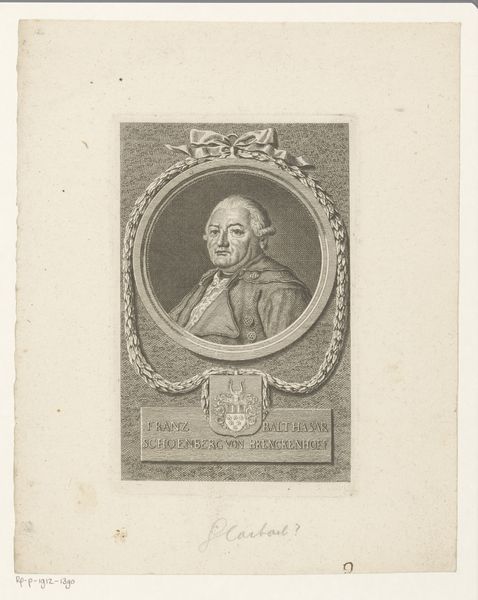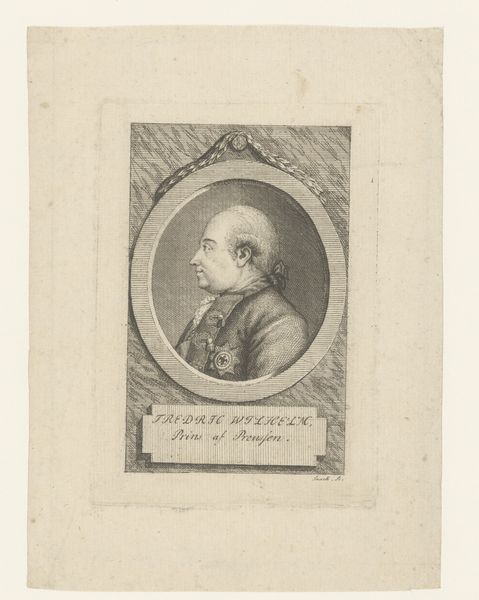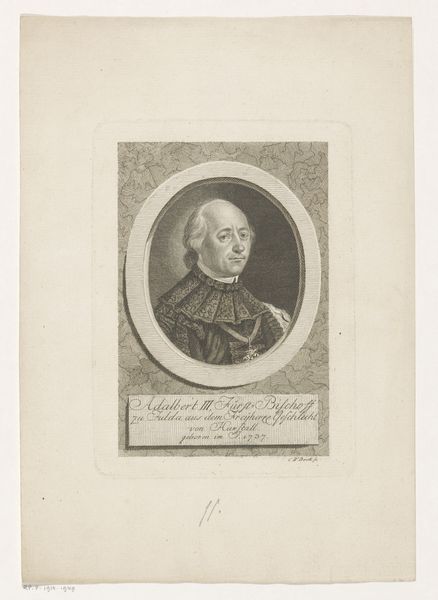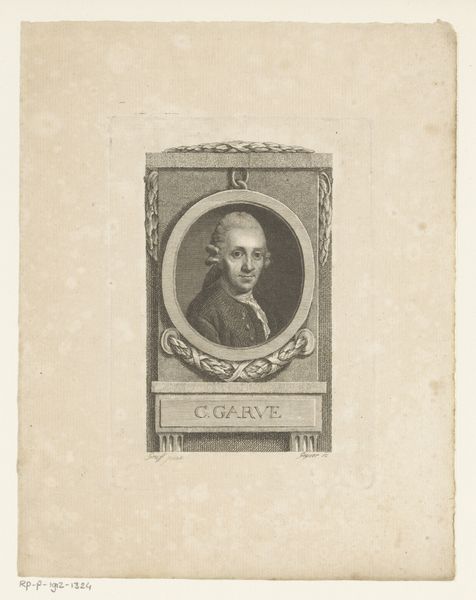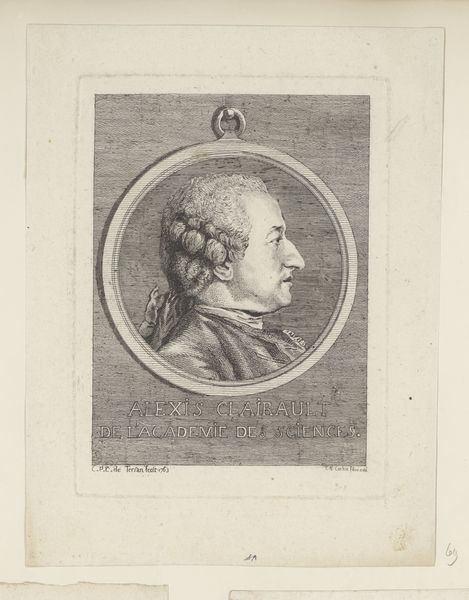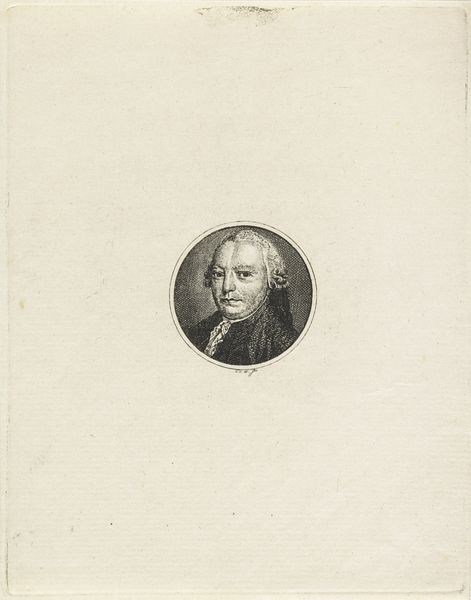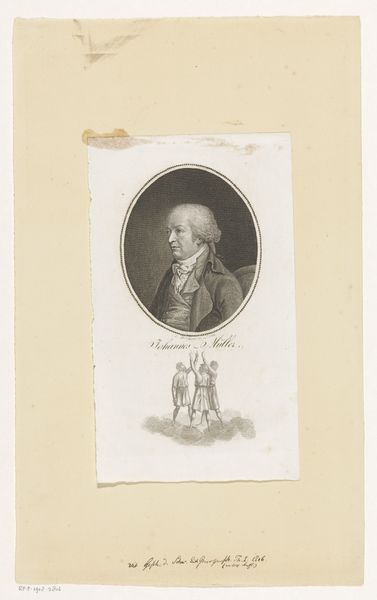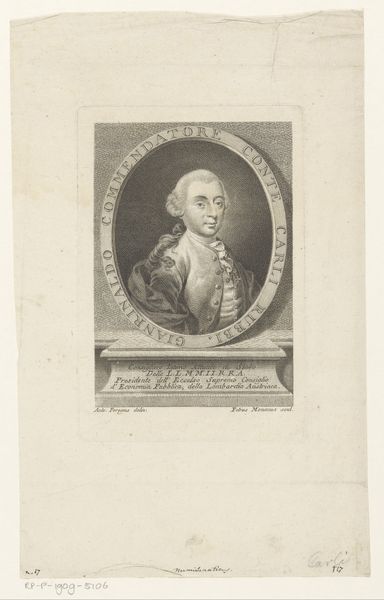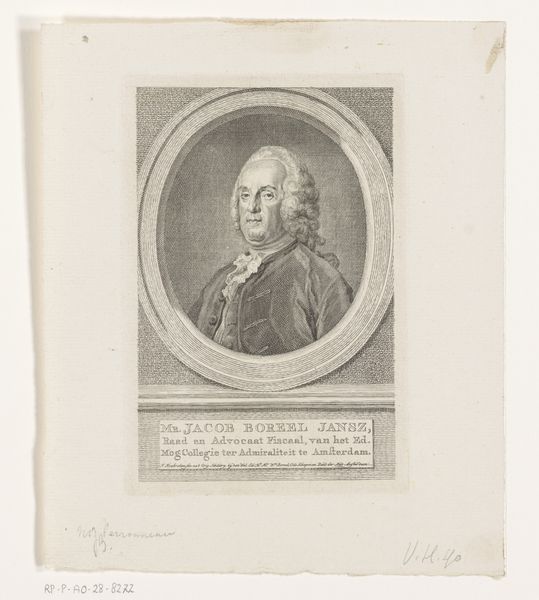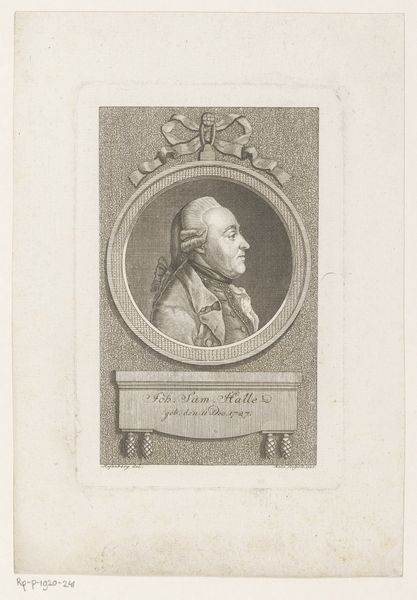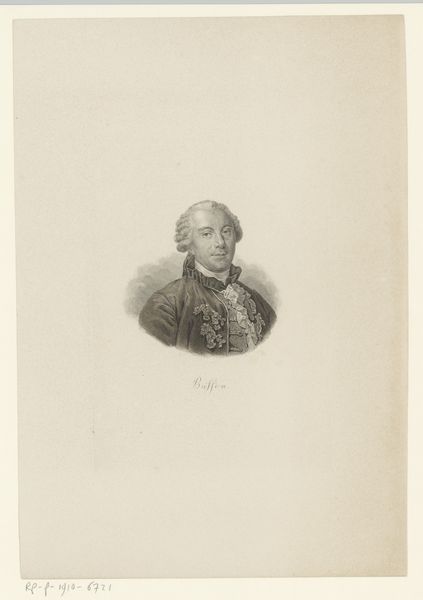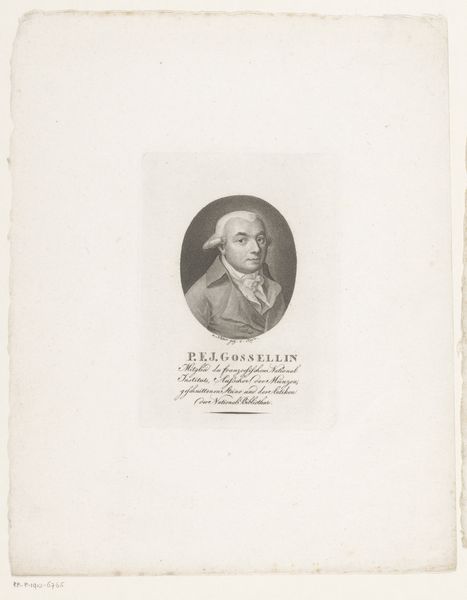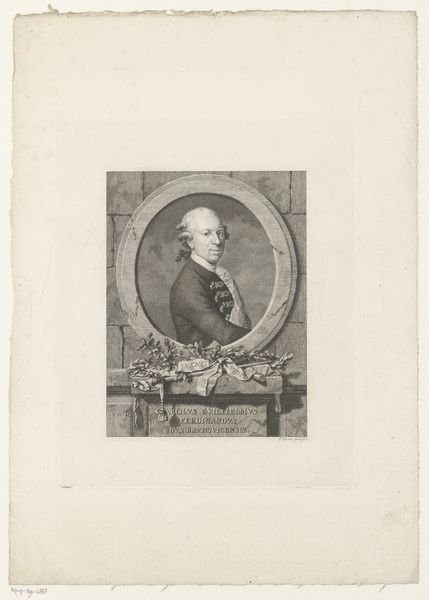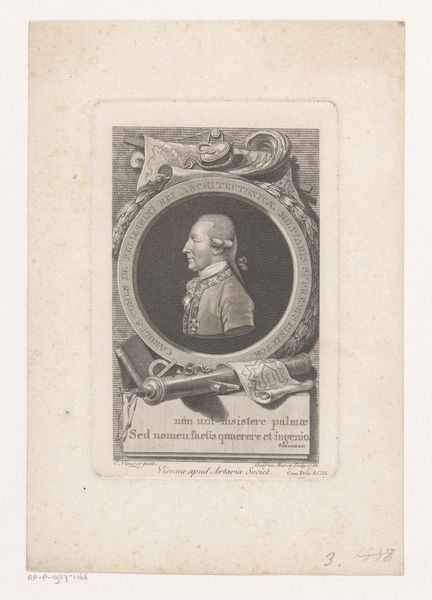
print, engraving
#
portrait
#
neoclacissism
# print
#
old engraving style
#
figuration
#
line
#
academic-art
#
engraving
#
realism
Dimensions: height 85 mm, width 93 mm
Copyright: Rijks Museum: Open Domain
Editor: Here we have a print from the Rijksmuseum, a "Portret van Franz Heufeld" by Gottlob August Liebe, made sometime between 1756 and 1819. The portrait’s encased in an oval frame. What strikes me is the precision of the lines; it has a very formal, almost severe feel. What do you see in this piece? Curator: The formality you perceive aligns with the Neoclassical style, doesn’t it? Look closely at the oval frame itself. The wreath and the crest are visual cues. Wreaths have been used for centuries to denote accomplishment, skill, and recognition. I wonder what Heufeld did to warrant such an honor? And, what emotional message was Liebe trying to send to Heufeld’s community of peers? Editor: So, the wreath isn't just decorative, it's symbolic of achievement and potentially a statement about the sitter’s social standing. Are there other symbols that tell us about him? Curator: Well, consider the medium itself – engraving. Before photography, engraved portraits played a vital role in disseminating images of important figures. In a way, it enshrines and memorializes the person. The very act of creating and distributing this portrait reinforces his importance. Editor: That’s fascinating. So the choice of engraving, combined with the wreath, speaks to a desire to immortalize Heufeld. Is there an element of cultural memory at work here? Curator: Absolutely. We see that cultural memory not only in the style and symbols, but also in the intent. These portraits served to create a visual record and a lasting impression. They remind us who society valued and wanted to remember. Editor: It’s interesting how even a seemingly simple portrait can be so rich in symbolism and cultural meaning. It gives a whole new appreciation for the artistry and purpose behind it. Curator: Indeed. Understanding the symbolic language of art unlocks a deeper understanding of the past and how we choose to represent it.
Comments
No comments
Be the first to comment and join the conversation on the ultimate creative platform.
